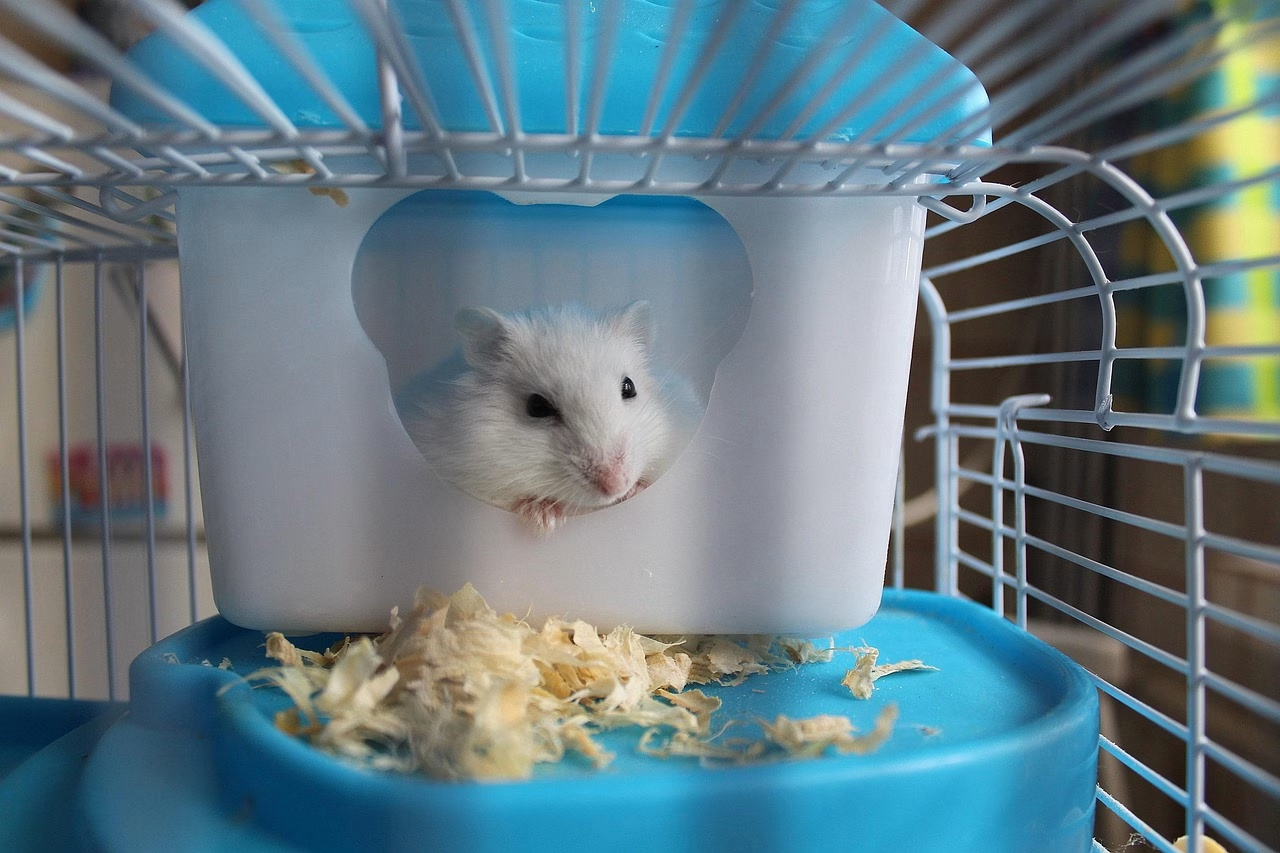A tiny hamster spinning on a wheel looks content, but appearances deceive. In the wild, these small rodents roam through burrow systems that stretch for meters underground. Their natural tunnels have chambers for nesting, storage, and exploration. Yet many domestic hamsters live in cages smaller than a pillowcase.
This article explores the difference between a hamster’s wild home and its typical cage. It also challenges the long-held belief that “small pets need small spaces.” Understanding this gap reveals how habitat size shapes health, behavior, and happiness.
The Myth of the Tiny Home
For years, commercial cages have been marketed with bright colors and plastic tubes. Labels often read “perfect size for dwarf hamsters.” The message suggests that tiny creatures need tiny spaces. In truth, every species builds environments that match its instincts.
A Syrian hamster in nature covers wide territories at night in search of seeds and roots. Dwarf species travel shorter distances but still dig deep burrows with several rooms. In captivity, when these instincts collide with confinement, stress appears as bar-biting, pacing, and constant chewing.
Behaviorists call this stereotypic behavior, a sign that the animal’s needs remain unmet.
How Wild Burrows Work
Hamsters are expert architects. Their burrows can reach depths of up to one meter and lengths of several meters. Each system includes:
- Sleeping chambers with soft plant material.
- Food storage areas that stay cool and dry.
- Escape tunnels for sudden danger.
- Ventilation shafts that control humidity.
Temperature underground stays stable, protecting hamsters from heat and predators. These tunnels also allow free movement and exercise. The design meets both physical and psychological needs.
When placed in small cages, hamsters lose that complexity. Without burrow depth or distance to travel, they run endlessly on wheels to compensate for missing exploration.
Measuring a Healthy Habitat
Modern animal-welfare research suggests that cage length should be at least 100 cm (about 40 inches) for a single hamster, with continuous floor space instead of stacked levels. The focus is not decoration but usable terrain.
A proper habitat should include:
- Deep bedding, at least 20 cm, for digging.
- Separate sleeping and food zones.
- Hidden tubes or cardboard tunnels to mimic branching paths.
- Safe materials such as aspen shavings or paper substrate.
The goal is to recreate the feeling of movement and security that wild burrows provide.
Why Size Affects Health
Cage size influences more than behavior. Studies show that hamsters in small enclosures experience higher stress hormones and shorter lifespans. Limited space restricts exercise and natural temperature regulation. It also leads to obesity when energy outlets vanish.
In contrast, hamsters with space to dig and explore display stronger muscle tone, calmer temperaments, and better sleep cycles. Large habitats support both body and mind.
Learning from the Wild
Observing wild hamsters teaches that freedom matters as much as food. Every tunnel they dig is a decision shaped by instinct. Domestic life can never copy nature perfectly, but it can echo its rhythm.
Adding complexity rather than clutter helps. A few tunnels, deep bedding, and consistent night-day cycles allow the hamster to act like the creature it evolved to be.
Related: Pet Rodents vs. Wild Cousins: What We Get Wrong About Hamsters.
Practical Upgrades for Owners
Transforming a hamster habitat does not require expensive gear. Simple changes make major differences:
- Bigger base, fewer add-ons. Choose wide glass tanks or modular setups that offer running space.
- Digging zones. Fill half the area with deep substrate. Let the hamster shape tunnels freely.
- Natural materials. Replace plastic tubes with cardboard or cork.
- Routine cleaning. Partial cleanings preserve familiar scents, reducing stress.
- Rotate enrichment. Add new textures or scents weekly to mimic wild variety.
Small investments of space and time create richer lives.
The Psychology of Burrowing
Burrowing does more than protect from predators. It satisfies a sense of control. When a hamster constructs a tunnel, it creates safety through structure. Scientists have found that animals allowed to build show lower anxiety.
Domestic hamsters deprived of digging opportunities often show frustration. Some chew cage corners until injury occurs. Providing bedding deep enough for tunneling restores balance and prevents self-destructive habits.
Burrows, in essence, act as therapy built by instinct.
Connecting Wild Roots to Modern Care
Understanding wild behavior transforms how we design captive care. When an owner imagines the hamster’s natural environment, empathy guides decisions. Wide spaces, variable textures, and hidden corners reflect the geography of survival.
The closer the environment feels to nature, the more relaxed and curious the hamster becomes. Every pile of bedding or wooden tunnel echoes the underground world from which these animals came.
Related: How to Build a Foraging Box for Your Parrot (Easy DIY).
Secrets Under the Bedding
A hamster’s cage might look quiet, but under the surface, life continues. They store seeds in side chambers, line sleeping nests, and reopen old tunnels each night. Observing these activities reminds us that instinct never fades.
Providing room for that secret world restores dignity to captivity. When owners respect the scale of a hamster’s mind, they replace confinement with curiosity.
Space and Respect
Small pets do not mean small needs. A hamster’s life underground covers more territory than many owners imagine. Size is not luxury; it is welfare. Expanding a cage honors the animal’s nature and reduces silent suffering.
When we align care with natural design, we give back part of the wild that captivity removed. A bigger home becomes an act of respect.



One thought on “Hamster Cage Size Myths vs Wild Burrows”